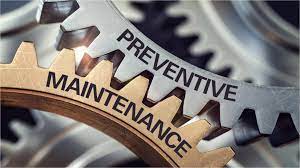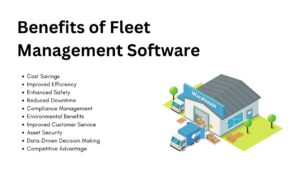Timelines are very tight in the construction business, and accuracy is very important. Good fleet management has gone from being a logistical necessity to a strategic advantage. Construction projects need a careful mix of resources to run smoothly. In this complicated dance, fleet management is one of the most important parts. This article will help you understand how complicated the construction industry is. It will show you ten ways that construction fleet management software can be a great help. It will help complete projects on time and make the best use of resources. Let’s get to the heart of how these new technologies are changing the building industry. We will know how to turn problems into chances for growth and excellence.

1. Real-time Monitoring and Tracking:
Fleet management software provides real-time visibility into the location and status of each vehicle and equipment. This allows project managers to make informed decisions promptly. This feature minimizes downtime, ensures optimal resource allocation, and enhances project coordination.
Example: A construction manager can track the movement of concrete trucks. This ensures timely deliveries and prevents delays in the pouring process.
2. Preventive Maintenance Scheduling:
Regular maintenance is crucial for the longevity of construction equipment. Fleet management software facilitates preventive maintenance scheduling based on usage and operational data. This proactive approach reduces the risk of unexpected breakdowns. This helps prevent costly repairs and project delays.
Stat: According to a recent study, preventive maintenance can reduce equipment downtime by up to 30%.
3. Fuel Management:
The cost of fuel can have a big effect on the budget for a construction job. Fleet management software tracks amount of fuel used. It helps find routes that use too much fuel, and encourages drivers to use less fuel. The costs of doing business will go down, and it will also help the earth.
Tip: Implementing fuel-efficient driving practices, can lead to large fuel savings.
4. Asset Utilization Optimization:
There are many kinds of tools used in construction jobs, and each one has its own specific job. Fleet management software makes sure that every piece of equipment is used properly. This aids to maximize asset utilization. By doing this, some resources won’t overload while others stay idle.
Example: Scheduling a crane for many tasks in a day, maximizes its usage and reducing idle time.
5. Enhanced Driver Behavior Monitoring:
For safety and efficiency’s sake, keeping an eye on how drivers act is essential. Fleet management software lets you keep an eye on bad habits of the drivers. By dealing with these behaviors, companies can cut down on accidents and lower the cost of maintenance.
Stat: According to the Federal Motor Carrier Safety Administration, improving driver behavior can lead to a 20-30% reduction in fuel consumption.
6. Route Optimization:
Planning routes is important for finishing projects on time. Fleet management software suggests the best route. It looks at things like traffic patterns, road conditions, and other factors. This not only cuts down on driving time but also keeps cars in better shape.
Tip: Update route plans based on real-time data to adapt to changing conditions.
7. Compliance Management:
Construction teams have to follow many rules. Such as safety standards and rules about how long they can be on the job. Fleet management software tracks transport compliance automatically. This lowers the risk of fines and legal problems. By doing this, building companies can be sure they are following the law.
Example: Automated logbooks help ensure that drivers follow hours-of-service regulations, preventing fatigue-related accidents.
8. Inventory Management:
A lot of tools, supplies, and spare parts are often kept in construction fleets. Software for fleet management helps keep track of and manage this inventory well. This makes sure that the right tools are available when and where they are required. This cuts down on project delays caused by resources not being available or being lost.
Stat: Proper inventory management can reduce tool search time by up to 40%, according to a recent poll.
9. Data-driven Decision Making:
Fleet management software gathers and analyzes a huge amount of data. This helps fleet managers make smart choices. Insights based on data can help you spot trends and plan for future projects.
Tip: Review data analytics reports to identify areas for improvement and install preventive measures.
10. Integration with Construction Project Management Systems:
Construction project management tools can work with fleet management software. Integration like this makes sure that data moves easily between different parts of the project. This encourages teamwork and cuts down on communication gaps.
Example: Integration with project management software allows for automatic updating of task progress based on the status of construction equipment.

To sum up, construction fleet management software helps the construction business. From real-time monitoring to making decisions based on data, all of these things help processes run more smoothly, projects get finished on time, and resources are used in the most cost-effective way possible. By using these technologies, building companies are not only ready to deal with current problems, but also to do well in a market that is becoming more and more competitive.
As building projects get more complicated, fleet control software is no longer a nice-to-have, it’s a must-have. Find out how adding this technology to your business can make your construction jobs more successful and efficient. Take your business efficiency to new heights with TransportSimple.






Leave a Reply